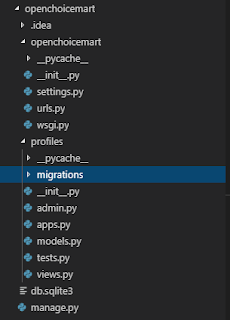Data Types
Since python is a dynamically typed programming language so no need to define datatype manually instead it will be identified based on value data type implicitly.
Data Type is a Type of value represented by the variable.
Various Data Types defined in Python as below:
1)int
2)float
3)complex
4)bool
5)str
6)bytes
7)bytearray
8)range
9)list
10)tuple
11)set
12)frozenset
13)dict
14)None
Note: In Python every thing is an object even an method also.
Explanation about each Data type:
1) int Data Type:
Python uses int data type to represent Integral values.
Program:
>>> a=10
>>> type(a)
Output:class 'int'
In how many ways we can represent int type:By default Python considers as decimal form only.
1)Decimal Form(Base-10):0 to 9
2)Binary Form(Base-2):0 and 1
Program
a=0b1111
a=0B1111
Output:15
Program:
a=-0b1111
output:-15
3)Octal Form(Base-8):0 to 7
Program:
>>> a=0o777
>>> a
Output:511
Program:
>>> a=0O777
>>> a
Output:511
4)Hexa Decimal(Base-16):0 to 9,a to f,A to F(Here Python is not case sensitive)
Program:
>>> a=0XFace
>>> a
Output:64206
Program:
>>> a=0xBeef
>>> a
Output:48879
Program:
>>> a=0xBeer
Output:SyntaxError: invalid syntax
2) float Data Type
Program:
>>> f=123.4435
>>>
>>> f
123.4435
Note:Exponential form is allowed under float data type.Big benefit of defining into exponential form is any bigger value can be represented into a shorter way.
Program:
>>> x=1.2e3
>>> x
1200.0
3) complex Data Type
If you want to develop scientific/complex program then always recommend to go for complex data type.
Syntax for complex data type is as a+bj
Where a represents Real Part and can be any data type
b represents Imaginary Part and can be only decimal.
j^2=-1 where j is mandatory.
Program:
>>> x=10+20j
>>> x
(10+20j)
>>> type(x)
Program:
>>> p=0b111+10j
>>> p
(7+10j)
Program: Operations with two complex equations
>>> a=10+20j
>>> b=20+10j
>>> a+b
(30+30j)
>>> a-b
(-10+10j)
To know about real and imaginary part using program
>>>a=10+20j
>>> a.real Here real is pre defined attribute/property by Python
10.0
>>> a.imag Here imag is pre defined attribute/property by Python
20.0
4) bool Data Type
Allowed values are True and False for bool data type where T and F always should be in caps.
Program:
>>> a=True
>>> a
True
>>> type(a)
>>> a=true
Traceback (most recent call last):
File "", line 1, in
a=true
NameError: name 'true' is not defined
Program:
>>> a='true'
>>> a
'true'
>>> type(a)
Program:
>>> True+True
2
>>> False+False
0
>>> True+False
1
5) str Data type
Any sequence of character is know as String.
Here we can represent str by using single quote or double quote but single quote is recommended.
Program:
>>> s=pradeep
Traceback (most recent call last):
File "", line 1, in
s=pradeep
NameError: name 'pradeep' is not defined
>>> s='pradeep'
>>> s
'pradeep'
>>> s="pradeep"
>>> s
'pradeep'
Note:For multiple line string literals we always need to use triple single/double quote.
Program:
If we use single quote to print multiple line string literals.
Test.py
s='pradeep
singh'
print(s)
Result:
D:\Python\Programs>py Test.py
File "Test.py", line 1
s='pradeep
^
SyntaxError: EOL while scanning string literal
Use triple single quote
Test.py
s='''pradeep
singh'''
print(s)
Result:
D:\Python\DurgaSir\Programs>py Test.py
pradeep
singh
slice Operator
To get a sub string(piece) of a string you need to use slice operator.
Syntax: s[begin:end]=>Returns substring from begin index to end-1 index.
Program:
>>> s="I am a software engineer"
>>> s[2:5]
'am '
>>> s[1:10]
' am a sof'
>>> s[0:10]
'I am a sof'
Default value for end index is end of the string if end index is not provided.
Program:
>>> s='pradeep'
>>> s[2:]
'adeep'
Default value for begin index is Start from the string if begin index is not provided.
Program:
>>> s='pradeep'
>>> s[:3]
'pra'
If not begin and end index is provided
Program:
>>> s='pradeep'
>>> s[:]
'pradeep'
How can we achieve jump by steps while getting sub string.
Syntax: s[begin:end:step]
Program:
>>> s='iamasoftwareengineer'
>>> s[1:10:2]
'aaota'
>>> s[1:10:3]
'ast'
Note: Python supports positive(Left to right) and negative(Right to Left) index both.
Program:
>>> s='pradeep'
>>> s[0]
'p'
>>> s[1]
'r'
>>> s[2]
'a'
>>> s[3]
'd'
>>> s[4]
'e'
>>> s[-1]
'p'
>>> s[-2]
'e'
>>> s[-3]
'e'
Repetition Operator:
Syntax: s*n->Repeats s String to n times
Program:
>>> s='pradeep'
>>> s*3
'pradeeppradeeppradeep'
>>> s*10
'pradeeppradeeppradeeppradeeppradeeppradeeppradeeppradeeppradeeppradeep'
Length of string:
Program:
>>> s='pradeep'
>>> len(s)
7
Python's Fundamental datatypes:
1)char ==>str type only
2)long ==>int type only
Type Casting or Type coersion:Python supports data type casting using multiple inbuilt functions
1)int():To convert any other type value to int type.
Program:
>>> int(123.345)
123
Note:Can not convert complex type to int type
Program:
>>> int(10+20j)
Traceback (most recent call last):
File "
", line 1, in
int(10+20j)
TypeError: can't convert complex to int
Boolean to int:
>>> int(True)
1
>>> int(False)
0
str to int:String should contain only base 10 value.
Program:
>>> int('10')
10
Program:
>>> int("10.5")
Traceback (most recent call last):
File "", line 1, in
int("10.5")
ValueError: invalid literal for int() with base 10: '10.5'
Program:
>>> int(0b1111)
15
>>> int('0b1111')
Traceback (most recent call last):
File "", line 1, in
int('0b1111')
ValueError: invalid literal for int() with base 10: '0b1111'
2)float()
Program:
>>> float(10)
10.0
Program:
>>> float(10+20j)
Traceback (most recent call last):
File "", line 1, in
float(10+20j)
TypeError: can't convert complex to float
Program:
>>> float(True)
1.0
>>> float(False)
0.0
Program:
>>> float('10')
10.0
>>> float('10.5')
10.5
Program:
>>> float('ten')
Traceback (most recent call last):
File "", line 1, in
float('ten')
ValueError: could not convert string to float: 'ten'
Function:complex()
Will be used to conver other types to complex type.
There are two forms of complex function found:
1)Form1: complex(x)=>Its implies that x+0j
2)Form 2: complex(x,y)=>x+yj
Programs:
>>> complex(10)
(10+0j)
>>> complex(10,20)
(10+20j)
>>> complex(True)
(1+0j)
>>> complex(True,True)
(1+1j)
>>> complex(False)
0j
>>> complex(False,False)
0j
>>> complex(False,True)
1j
>>> complex("10")
(10+0j)
>>> complex("10.5")
(10.5+0j)
>>> complex("ten")
Traceback (most recent call last):
File "<pyshell#9>", line 1, in <module>
complex("ten")
ValueError: complex() arg is a malformed string
>>> complex(0B1111)
(15+0j)
>>> complex("5","10")>>> complex("5","10") Traceback (most recent call last): File "<pyshell#12>", line 1, in <module> complex("5","10")TypeError: complex() can't take second arg if first is a string
Function: bool()
To convert other types to boolean.
Int Argument:
If we pass non zero value then bool returns always true other wise false.
Program:
>>> bool(1)
True
>>> bool(10)
True
>>> bool(0)
False
>>> bool(12)
True
float Argument:
If we pass except 0.0 value then bool returns always true.
Program:
>>> bool(0.0)
False
>>> bool(0.1)
True
complex Argument:
If both real and imaginary part are 0 then bool returns false other wise true.
Program:
>>> bool(10+20j)
True
>>> bool(0+10j)
True
>>> bool(0+0j)
False
>>> bool(0j)
False
>>> bool(1j)
str Argument:
if argument is empty string then bool returs as false other wise returns true.
>>> bool('')
False
>>> bool("pradeep")
True
>>> bool(' ')
True
Note:bool function never throws error for any data types.



